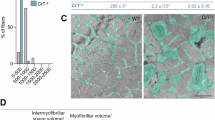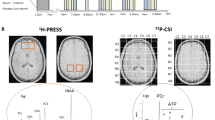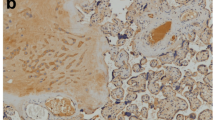Abstract
The effect of creatine (Cr) on the response of the respiratory center to anoxia was analyzed at different postnatal stages in a brainstem slice preparation of mice. Spontaneous rhythmic activity was recorded from hypoglossal rootlets (XII) and from identified neurons within the preBötzinger complex using the whole cell patch clamp technique. The hypoxic response was evaluated in slices from animals (n = 46), which received normal nutrition (controls, n = 16), from litters of animals fed with Cr (2 g/kg/day; nutrition group, n = 8), or after incubating slices for 3 h in Cr (200 μM) (incubation group, n = 22). ATP was measured in slices from controls and Cr-incubated slices which underwent 30-min anoxia. In neonatal animals (P0-5), amplitudes of hypoglossal bursts increased initially during anoxia by 14% in controls and by 41% in Cr-supplemented animals when compared with preanoxic values. Hypoglossal burst duration increased by 3% in controls, but by 18% in the Cr-nutrition group. In brainstem slices, the initial increase of amplitudes changed from 14%(controls) to 59% (Cr incubation) and prolongation of bursts from 3%(controls) to 37% (Cr incubation) compared with preanoxic values. In juvenile controls (P6-13), burst amplitude and duration increased by 12 and 14% during early anoxia when referred to preanoxic values. In slices from Cr-pretreated animals, increases of 48% (amplitude) and 21% (burst duration) occurred. The ATP levels remained constant during a 30-min anoxic period in the Cr-pretreated group compared with a decrease of 44% in slices from controls. Our data suggest that Cr can ameliorate hypoxic energy failure. Further studies will examine the neuroprotective potential in humans.
Similar content being viewed by others
Log in or create a free account to read this content
Gain free access to this article, as well as selected content from this journal and more on nature.com
or
Abbreviations
- aCSF:
-
artificial cerebrospinal fluid
- Cr:
-
creatine
- PCr:
-
phosphocreatine
- XII:
-
hypoglossal rootlets
- NMDA:
-
N-methyl-D-aspartate
- preBÖTc:
-
preBötzinger complex
References
Ben Ari Y 1989 Effects of glibenclamide, a selective blocker of an ATP-K+ channel, on the anoxic response of hippocampal neurons. Plügers Arch 414( suppl 1): S111–S114
Ben Ari Y 1990 Modulation of ATP sensitive K+ channels: a novel strategy to reduce the deleterious effects of anoxia. Adv Exp Med Biol 268: 481–489
Jiang C, Haddad GG 1991 Effect of anoxia on intracellular and extracellular potassium activity in hypoglossal neurons in vitro. J Neurophysiol 66: 103–111
Choi DW 1988 Glutamate neurotoxicity and disease of the nervous system. Neuron 1: 623–634
Choi DW 1990 Cerebral hypoxia: some new approaches and unanswered questions. J Neurosci 10: 2493–2501
Rothman SM, Olney JW 1986 Glutamate and the pathophysiology of hypoxicischemic brain damage. Ann Neurol 19: 105–111
Rothman SM, Olney JW 1987 Excitotoxicity and the NMDA receptor. TINS 10: 299–302
Lutz PL 1992 Mechanisms for anoxic survival in the vertebrate brain. Annu Rev Physiol 4: 601–618
Whittingham TS, Lipton P 1981 Cerebral synaptic transmission during anoxia is protected by creatine. J Neurochem 37: 1618–1621
Lipton P, Whittingham TS 1982 Reduced ATP Concentration as a basis for synaptic transmission failure during hypoxia in the in vitro guinea-pig hippocampus. J Physiol 325: 51–65
Vannucci RC 1990 Experimental biology of cerebral hypoxic-ischemia: relation to perinatal brain damage. Pediatr Res 27: 317–326
Katayama Y, Kawamata T, Tamura T, Hovada DA, Becker DP, Tsubokawa T 1991 Calcium-dependent glutamate release concomitant with massive potassium flux during cerebral ischemia in vivo. Brain Res 558: 136–140
Martin RL, Lloyd HGE, Cowan AI 1994 The early events of oxygen and glucose deprivation: setting the scene for neuronal death?. TINS 17: 251–257
Takata T, Okada Y 1995 Effects of deprivation of oxygen or glucose on the neural activity in the guinea pig hippocampal slice-intracellular recording study of pyramidal neurons. Brain Res 683: 109–116
Holtzman D, McFarland E, Moreland T, Koutcher J, Kushmerick MJ, Neuringer LJ 1989 Brain creatine phosphate and creatine kinase in mice fed an analogue of creatine. Brain Res 483: 68–77
Balestrino M 1995 Pathophysiology of anoxic depolarization: new findings and a working hypothesis. J Neurosci Methods 59: 99–103
Haddad GG, Mellins RB 1984 Hypoxia and respiratory control in early life. Annu Rev Physiol 46: 629–643
Martin-Body RL, Johnston BM 1988 Central origin of the hypoxic depression of breathing in the newborn. Respir Physiol 71: 25–32
Neubauer JA, Melton JE, Edelman NH 1990 Modulation of respiration during brain hypoxia. J Appl Physiol 68: 441–449
Richter DW, Bischoff A, Anders K, Bellingham M, Windhorst U 1991 Response of the medullary respiratory network of the cat to hypoxia. J Physiol 443: 231–256
Ramirez JM, Quellmalz UJA, Richter DW 1996 Postnatal changes in the mammalian respiratory network as revealed by the transverse brainstem slice of mice. J Physiol 491: 799–811
Upton CJ, Milner AD, Stokes GM 1991 Apnea, bradycardia, and oxygen saturation in preterm infants. Arch Dis Child 66: 381–385
Smith JC, Ellenberger HH, Ballanyi K, Richter DW, Feldman JL 1991 Pre-Bötzinger complex: a brainstem region that may generate respiratory rhythm in mammals. Science 254: 726–729
DeLuca M, McElroy WD 1978 Purification and properties of firefly luciferase. Methods Enzymol 57: 3–15
Lundin A, Hasenson M, Persson J, Pousette A 1986 Estimation of biomass in growing cell lines by adenosine triphosphate assay. Methods Enzymol 133: 27–42
Stanley PE 1986 Extraction of adenosine triphosphate from microbial and somatic cells. Methods Enzymol 133: 14–22
Bradford MM 1976 A rapid and sensitive method for the quantification of microgram quantities of protein utilizing the principle of protein-dye binding. Anal Biochem 72: 248–254
Lamprecht W, Stein P, Heinz F, Weisser H 1974 Kreatinphosphat: Methoden der enzymatischen Analyse in Bergmeyer HU, Verlag Chemie Weinheim Band II Seite 1825–1829
Erecinska M, Silver IA 1989 ATP and Brain Function. J Cereb Blood Flow Metab 9: 2–19
Haddad GG, Donnelly DF 1990 O2 Deprivation induces a major depolarization in brain stem neurons in the adult but not in the neonatal rat. J Physiol 429: 411–428
Donnelly DF, Jiang C, Haddad GG 1992 Comparative responses of brain stem and hippocampal neurons to O2 deprivation: in vitro intracellular studies. Am J Physiol 262:L549–L554
O'Reilly JP, Jiang C, Haddad GG 1995 Major differences in response to graded hypoxia between hypoglossal and neocortical neurons. Brain Res 683: 179–18186
Johnston MV 1995 Neurotransmitters and vulnerability of the developing brain. Brain Dev 17: 301–306
Luhmann HJ, Heinemann U 1992 Hypoxia-induced functional alterations in adult rat neocortex. J Neurophysiol 67: 798–811
Tsuji M, Allred E, Jensen F, Holtzman D 1995 Phosphocreatine and ATP regulation in the hypoxic developing rat brain. Dev Brain Res 85: 192–200
Pierard C, Champagnat J, Denavit-Saubie M, Gillet B, Beloeil JC, Guezennec CY, Barrer B, Peres M 1995 Brain stem energy metabolism response to acute hypoxia in anaesthetized rats: a 31P NMR study. NeuroReport 7: 281–285
Norwood WI, Ingall JS, Norwood CR, Fossel ET 1983 Developmental changes of creatine kinase metabolism in rat brain. Am J Physiol 244:C205–C210
Holtzman D, Tsuji M, Wallimann T, Hemmer W 1993 Functional Maturation of creatine kinase in rat brain Dev N. eurosci 15: 261
Ruggins NR 1991 Pathophysiology of apnea in preterm infants. Arch Dis Child 66: 70–73
Stöckler S, Holzbach U, Hanefeld F, Marquardt I. Helms G, Requart M, Hänicke W, Frahm J 1994 Creatine deficiency in the brain: a new, treatable inborn error of metabolism. Pediatr Res 36: 409–413
Frahm J, Bruhn H, Hanefeld F 1995 Proton NMR studies of human brain metabolism. In: Belton PS, Delgadillo I, Gil AM, Webb GA (eds). Proceedings of the 2nd International Conference on Applications of Magnetic Resonance in Food Science. Royal Society of Chemistry, Cambridge, UK, pp 191–205
Author information
Authors and Affiliations
Additional information
Supported by grants from the Sonderforschungsbereich (SFB) 406.
Rights and permissions
About this article
Cite this article
Wilken, B., Ramirez, J., Probst, I. et al. Creatine Protects the Central Respiratory Network of Mammals under Anoxic Conditions. Pediatr Res 43, 8–14 (1998). https://doi.org/10.1203/00006450-199801000-00002
Received:
Accepted:
Issue date:
DOI: https://doi.org/10.1203/00006450-199801000-00002
This article is cited by
-
Early postnatal exposure to intermittent hypoxia in rodents is proinflammatory, impairs white matter integrity, and alters brain metabolism
Pediatric Research (2017)
-
Creatine kinase in ischemic and inflammatory disorders
Clinical and Translational Medicine (2016)
-
Potential of creatine or phosphocreatine supplementation in cerebrovascular disease and in ischemic heart disease
Amino Acids (2016)
-
Creatine for women: a review of the relationship between creatine and the reproductive cycle and female-specific benefits of creatine therapy
Amino Acids (2016)
-
A Potential Role for Creatine in Drug Abuse?
Molecular Neurobiology (2011)



